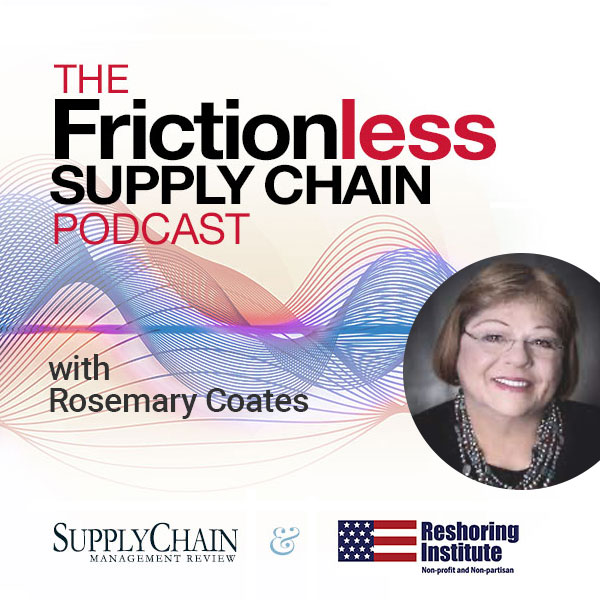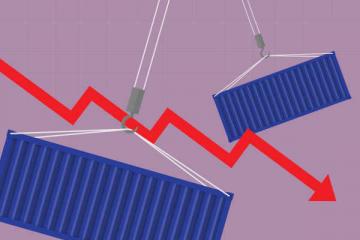After three rounds of failed trade negotiations, a trade war between the U.S. and China, the world's two largest economies, begins today. China's Ministry of Commerce has announced that China will fight back against the U.S. by imposing retaliatory tariffs on imports to China such as American soybeans and autos. Other countries including Canada, Mexico, and the EU are already fighting back after the imposition of tariffs a few weeks ago.
So what should global supply chain professionals do now? If you are like many of us, you are already losing sleep over these events.
The idea behind the imposition of tariffs is to increase the cost of imported goods to the point where American manufacturers can compete more effectively, and to punish other countries for unfair trade practices. But the reality is that the global economy is so intertwined that most U.S. manufacturers rely heavily on imported parts to support their own U.S. production.
Purchasing and Sourcing managers are already scrambling to find alternate sources in countries where these new U.S. import tariffs do not apply – at least not yet.
But that's not all… Just finding suppliers is only half of the battle. Qualifying and completing a risk assessment and a financial assessment is typically required before a new supplier can be added. Then a supplier must be evaluated for product quality, capacity, schedules, and other criteria. This process is complicated and can take months to complete. Many companies started this process of developing alternate suppliers months ago when the new tariffs were first announced.
But that's not all… Logistics channels including foreign trucking operations, freight forwarders, and export requirements from another country must be identified. New contracts and rates must be negotiated. Your U.S. production schedules must be adjusted for new steamship sailings and ports of call, and for new airfreight routes.
Some companies are working to reestablish manufacturing capability in the U.S. We applaud these reshoring efforts, but we also know from experience that it's not as easy as it looks. Setting up a new manufacturing facility is complicated and requires time and effort from experienced staff and lots of planning.
But that's not all… Leaving a manufacturing site in a foreign country may require permission from the foreign government, pay-outs of employee contracts, and a fight to retrieve manufacturing equipment and tools that you think belong to you. These things can cause unexpected delays and legal battles.
But that's not all… Redeveloping supply base in the U.S. can take 12-18 months, especially for sophisticated or complex parts. When manufacturing moved overseas over the past 25 years, so did your supply base. You'll need to reestablish and qualify suppliers and that takes time. In addition, some parts, especially electronics, may never be made again in the U.S. These parts must continue to be imported, and will cost more with new import tariffs.
But that's not all… If your company has a Sales & Operations Planning process (S&OP), you may need to rethink how it works. Supplier schedules will change, logistics may become a more significant factor, and inventory levels may have to be adjusted. Uncertainty in the supply chain usually translates into build up of parts inventory to offset the risk of shortages. Your S&OP plan will have to become more flexible.
But that's not all… The uncertainty in a trade war means that in retaliation for new tariffs, new categories of products may be unexpectedly added. You may find your company in the unfortunate situation of big increases in the cost of goods sold or the unavailability of parts because other companies have placed big anticipatory orders and are hoarding raw materials.
Supply chain professionals should take immediate action, if you haven't already, to secure new suppliers and to do strategic planning using multiple “what-if” supply and cost scenarios. Your focus should be on developing alternative and flexible supply chains that can be adjusted with speed. It's time for all hands-on deck to fight for your company's survival.
SC
MR

Latest Supply Chain News
- Joseph Esteves named CEO of SGS Maine Pointe
- Employees, employers hold divergent views on upskilling the workforce
- April manufacturing output slides after growing in March
- Q1 sees a solid finish with positive U.S.-bound import growth, notes S&P Global Market Intelligence
- World Trade Centers offers a helping hand to create resilient, interconnected supply chains
- More News
Latest Podcast

 Explore
Explore
Procurement & Sourcing News
- April manufacturing output slides after growing in March
- World Trade Centers offers a helping hand to create resilient, interconnected supply chains
- Bridging the ESG gap in supply chain management: From ambition to action
- Israel, Ukraine aid package to increase pressure on aerospace and defense supply chains
- How CPG brands can deliver on supplier diversity promises
- How S&OP provides the answer to in-demand products
- More Procurement & Sourcing
Latest Procurement & Sourcing Resources

Subscribe

Supply Chain Management Review delivers the best industry content.

Editors’ Picks




